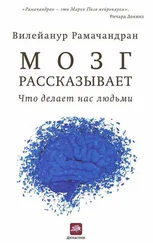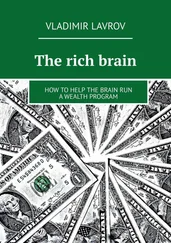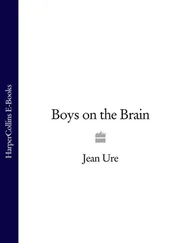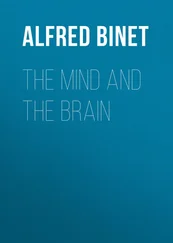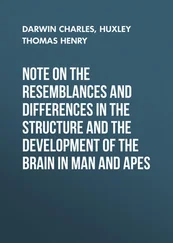Ovid, 21
pain, 49–56
memory of, 51–52, 111
pain, phantom, vii, viii, 1, 22, 28, 32–33, 38, 40, 47, 49–55, 111
abnormal remapping and, 50–51
alleviation of, 24, 32–33, 49, 50, 52–55
causes of, 50–51
cup experiment and, 43
pain asymbolia, 207–208
palinopsia, 274n–278n
Papez, James, 177, 284n
paradigm shifts, 136, 204, 205, 222–223, 280n, 291n
Paradise Lost (Milton), 176
paralysis, 14
denial of, vii, 2, 127–157, 278n–283n
of denial patient’s right arm, 140–141
learned, viii, 46, 47–48, 269n
in monkeys, 27–28
in phantom limbs, vii, viii, 43–47
stroke and, 48, 119, 127–128
see also anosognosia; somatoparaphrenia
Paré, Ambroise, 22
parent(s):
child’s sexual attraction to, 161
as imposters, ix, 158–166
as robot, 166
parietal lobe, 9, 9 , 46, 49, 73, 116–117
Balint’s syndrome and, 80
body image and, 44, 45, 46, 49–50, 142, 156, 246, 247
denial and, 139, 142
left, damage to, 116, 117
motor system and, 44, 45, 49–50
right, detection of damage to, 125
right, stroke in, 114, 117, 142, 277n
spatial representation and, 115, 120–121, 125
see also “how” pathway
Parkinson’s disease, 7, 269n–270n
parthenogenesis, 104
passionate self, 247–249
Paul (temporal lobe personality), ISO- 182
Peggy Sue (MPD patient), 224–225
penduncular hallucinosis, 252–253
Penfield, Wilder, 25–27, 26
Penfield homunculus (sensory homunculus), 25–27, 26 , 29, 31, 32 , 37, 39, 44, 50, 267n, 268n, 298n
penis, 25, 37, 270n
see also erections
perception, 63–112, 271n–275n, 293n
ambiguity in, 68
comparisons vs. absolute value in, 167
eggs and cavities image and, 68, 69
fiinhouse imagery view of, 109
judgment and, 67
memory and, 112, 238–241
stability in, 241–242, 271n
as “unconscious inference, ” 68
unity of, 80–81
see also vision, visual system
perceptual filling in, 100–104, 110
perimetry, 102
periodic table, 222
Perrett, David, 77
Persinger, Michael, 175, 184
pets, Capgras’ syndrome and, 161–162
phantom limbs, vii-viii, xi, 1, 3, 21–58, 111, 266n–270n
“amputation” of, viii, 49–50
being born with, 40–42, 269n
defined, vii, 22
explanations of, 23, 28, 31–32
in historical perspective, vii, 22–23
movement of, 40–48
paralysis in, vii, viii, 43–47
“virtual reality” device and, 46–49, 52–55, 141–142
vision and, 43, 46–49, 54–55
Phelps, M.E., 263n
phrenology, 264n–265n
physics, 4–5
Piel, Jonathan, 95–96
Pinker, Steven, xii, 288n
pituitary gland, 177, 216, 294n
placebo effect, 53, 151–152, 214, 221, 295n–296n
Plum, F., 298n
poetry, 7, 188
polyandry, 183
polygamy, 183, 184
pons, 9, 9 , 16
Pons, Tim, 25, 27–30, 267n, 268n
positron emission tomography (PET), 141, 142, 263n, 285n
Posner, M., 263n
potential intelligence, 190–191
preadaptation, 209
preformationism, 104
pregnancy:
false (pseudocyesis), 212–218, 294n
sympathetic (couvade syndrome), 218
Pribram, K., 269n
primary axon, 8
primary visual cortex, 70, 71 , 72, 73, 75, 76, 77, 81, 109, 110, 115, 275n
Proceedings of the Royal Society of London , 269n
Profet, Margie, 288n
progesterone, 294n
projection, 154–155
prolactin, 216, 217, 218, 294n
prosopagnosia, 162, 284n
pseudocyesis (false pregnancy), 212–218, 294n
psychological defenses, see defense mechanism(s)
qualia (subjective sensation), 229–245, 251–252, 296n–297n
defined, 229, 230
features of, 238–242, 239
riddle of, 229–231
Queen Square Neurological Hospital for Neurological Diseases, 141–142
rabies, 177, 284n–285n
racism, 171
Rafael, Robert, 278n
Raichle, M., 263n
Ramachandran, Mani, 83
Ramachandran, V.S., 69 , 227, 239, 267n–271n, 273n, 274n, 278n, 281n, 284n, 286n, 296n
Ramanujan, Srinivasa, 188, 193–195
Ramón y Cajal, Santiago, 234
rationalizations, 152, 154, 155, 156
reaction formation, 139, 153–154, 155
recticular activating system, 116
reductionism, 234, 264n
redundancy, 34
religious experience, ix, 1, 3, 6, 175–188, 285n
REM (rapid eye movement) sleep, 147–148, 282n
repression, 135, 143–144, 146, 148, 149, 153, 155, 161, 282n
reverse engineering, 209–210
Rickard, Tim, 266n
Ridley, M., 285n
rifle targets, 83
right hemisphere, xiii, 9–10, 9 , 12–13, 32, 288n
angular gyrus of, 196
anosognosia and, 132, 141, 147, 282n
as Devil’s Advocate, 135–136
discrepancies monitored in, 142, 280n
injury in, 7, 13, 14, 114, 117, 127–128, 132, 134, 142, 144, 280n, 281n, 282n; see also neglect syndrome
language and, 133
self-deception and, 279n
translation barrier and, 283n
vision and, 133–134
Rivermead Rehabilitation Center, 131
Robinson, R.G., 280n
robot, parent as, 166
Rock, I., 271n
Rodin, E., 285n
Rogers-Ramachandran, D., 269n, 270n
Rolls, E.T., 77, 239 , 284n
Rubáiyát of Omar Khayyám, The , 1, 188
Sacks, Oliver, xii, 73, 118, 143, 162, 192, 272n, 287n
Sagan, Carl, ix, xii
Sam (Ellen’s son), 113–115, 120
Sanders, Mike, 75
San Diego Rehabilitation Center, 150
savant syndrome (idiot savant syndrome), 192–197, 194 , 286n–287n
explanation of, 195–196, 286n–287n
Schacter, D.L., 278n
schizophrenia, 176, 182, 253, 285n
Schmaltz, S., 285n
Schopenhauer, Arthur, 203
Schrödinger, Erwin, xii, 176
science:
exception vs. rule in, 5–6
progress in, 221–222
Scientific American , 95–96, 272n
scientific revolutions, common denominator of, 156–157
scotoma, 71 , 96–104, 274n, 275n
corner-of-a-square experiment and, 102–103
decapitation and, 103
migraines and, 89, 97
perimetry and, 102
Searle, John, 245, 296n
“Secret Life of Walter Mitty, The” (Thurber), 85
Sejnowski, Terry, 265n, 275n
self, xviii, 3, 12, 81, 83–84, 227–257, 296n–298n
anosognosia and, 137
body image and, 61–62, 247, 250
Capgras’ syndrome and, 171–173
conceptual, 253–254
executive, 249–250
as illusion, 84, 227–228, 247, 272n
mnemonic, 250–251
passionate, 247–249
social, 254
unified, 251–252
vigilant, 252–253
see also consciousness
self-deception, 130, 134–135, 254–255, 278n–279n
Selfe, Lorna, 194
Sen, Sathyajit, 40
sensory cortex, viii, 9 , 16
sensory homunculus, see Penfield homunculus
septum, 175, 178 , 228
Sergent, Justine, 98, 273n, 274n
Sex (Madonna), 36
sexuality, sexual behavior, 10, 153, 197, 201
children’s attraction to parents and, 161
ears and, 37
feet and, 3, 35–37
indiscriminate, 78, 79
temporal lobe epilepsy and, 181, 186, 187
see also erections; orgasm; penis
sexual selection, 293n
Shah, Muntaz, 149–150
Shakespeare, William, 85, 111, 148, 152, 198, 241, 256, 282n
Shallice, T., 269n
shapes, vision and, 110, 111
shoelace experiment, 138–139
Читать дальше


